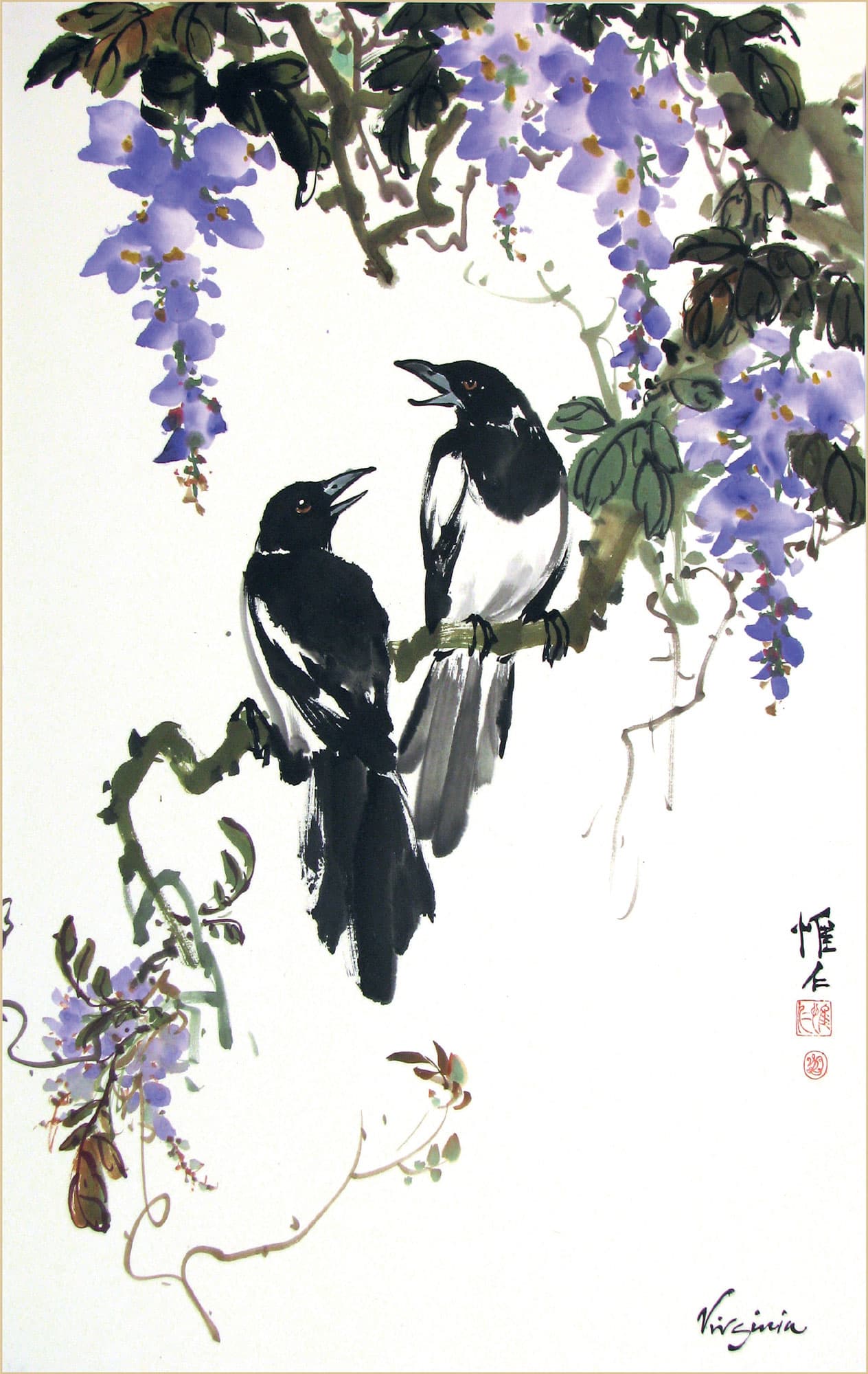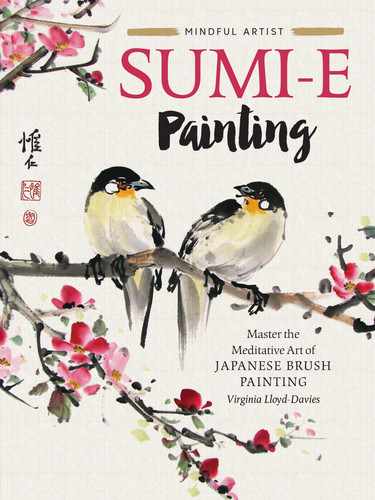Wisteria

Wisteria is a vigorous climbing vine. You can find wisteria flowers in a range of colors, including lavender, white, pink, and violet. Some artists like to make their flowers quite detailed, showing the oval top petal and the lower, darker “beak,” while others choose to paint in the quick-stroke impressionistic style that I’ve featured in this book.
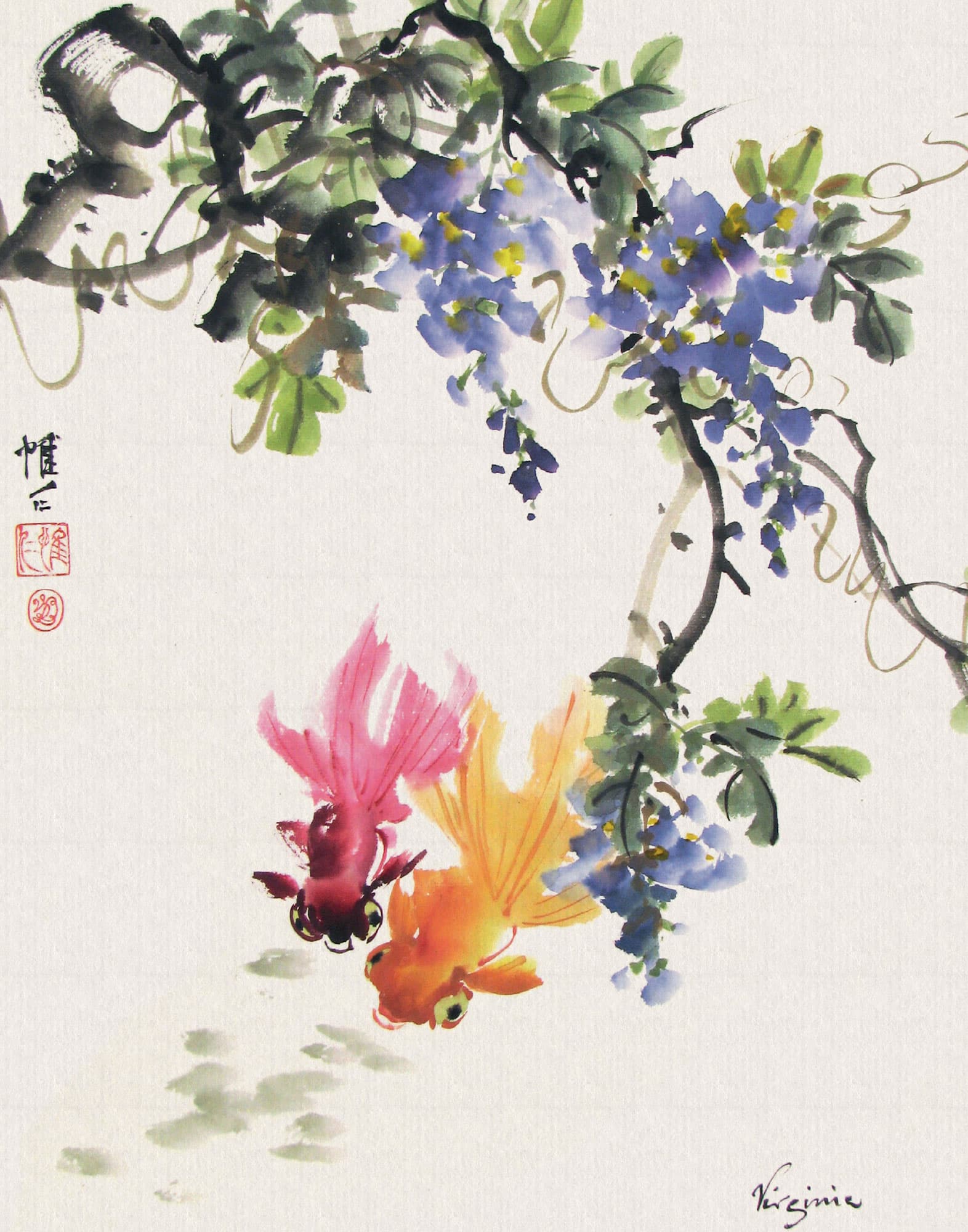
1 Wet a small soft brush, add a light shade of purple halfway up; then blend a darker color at the tip. Start at the top of the flower cluster and work your way down using a flicking check mark stroke, varying the size, lightness, darkness, and direction of each flower. When you reach the small, dark buds at the bottom of the cluster, leave some spaces down the middle for the stems.
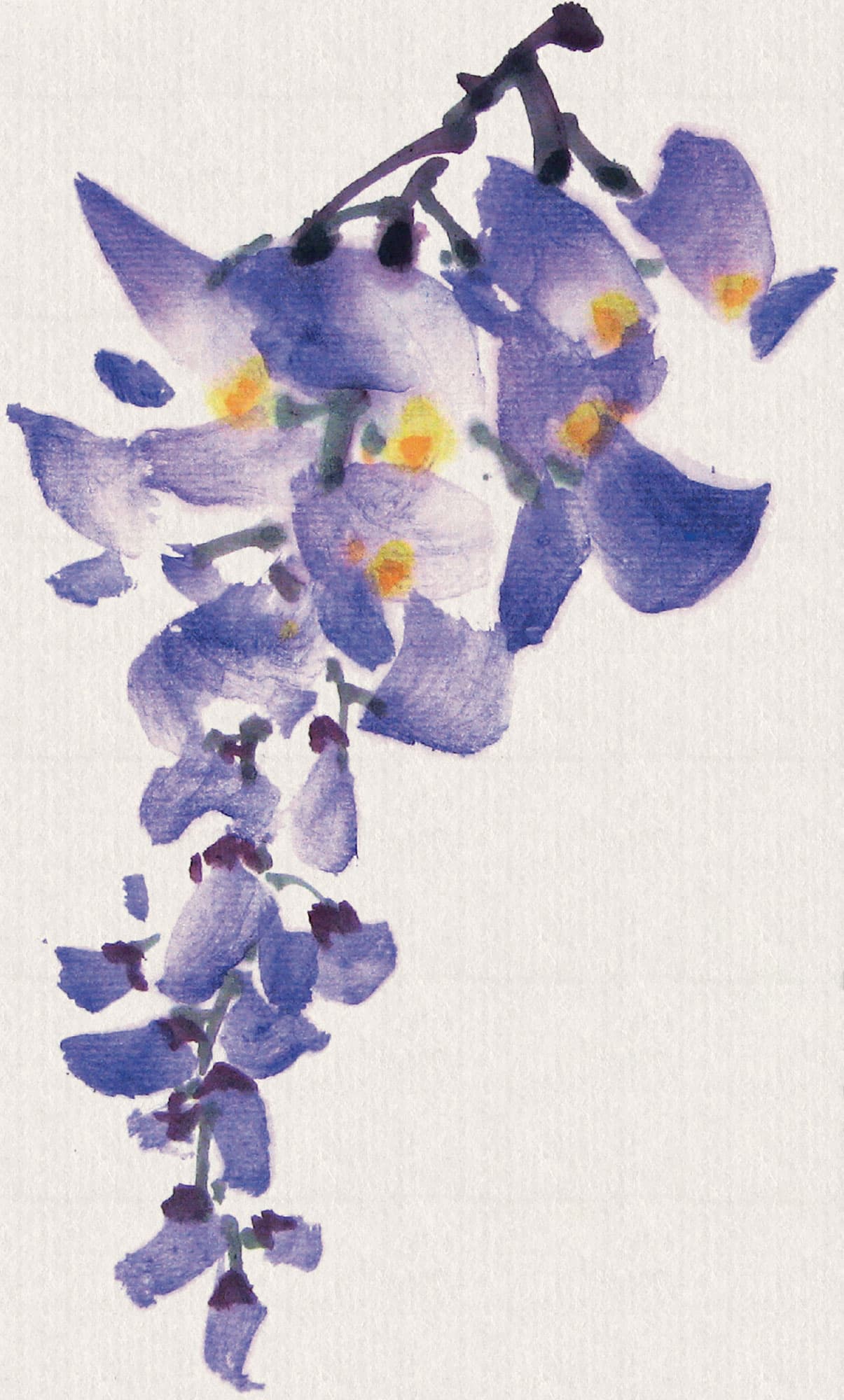
2 Before the flowers dry, add a dilute touch of yellow and orange at the center of each flower. Add calyxes to the buds using rouge mixed with black. With green on a Happy Dot brush, paint the main stem from the top and alternate the side stems, angling toward the flowers and buds.
Leaves
You may find it helpful to paint some center stems first in light green, arching and crossing like orchid leaves (shown here). Using the orchid/bamboo brush loaded with a mixture of yellow, blue, and a tip of black, add the leaves, starting with the leaf at the tip. Fill in the group with extra leaves in lighter green or black. Paint the young leaves with light green and a little orange, and make sure to paint the leaves in groups rather than randomly scattered throughout.
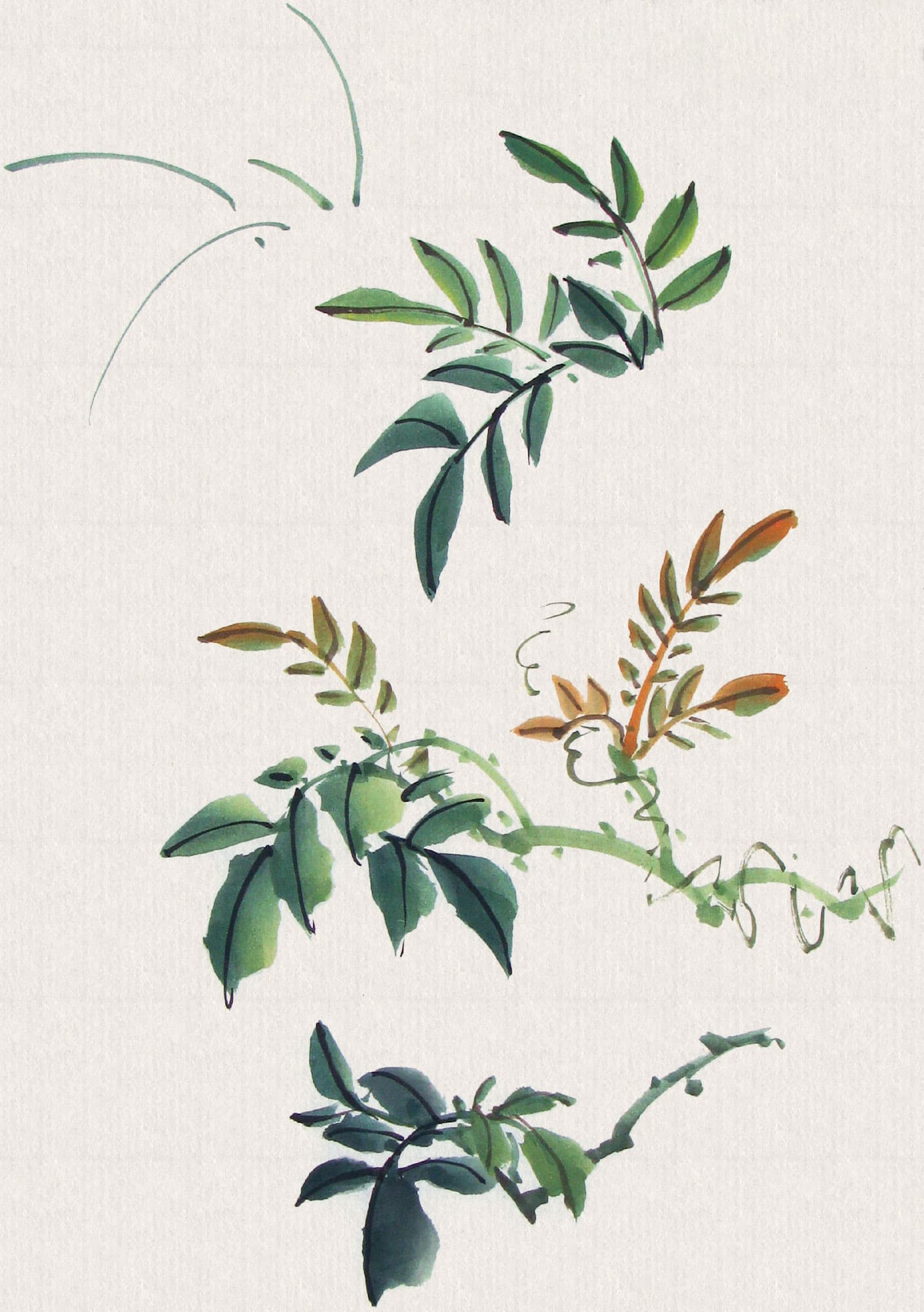
Vines
Holding your orchid/bamboo brush vertically, paint the branches and vines in brown and green. Let them twist and cross over, and don’t forget a few tendrils in black or green wrapping around the vines and reaching out into space.
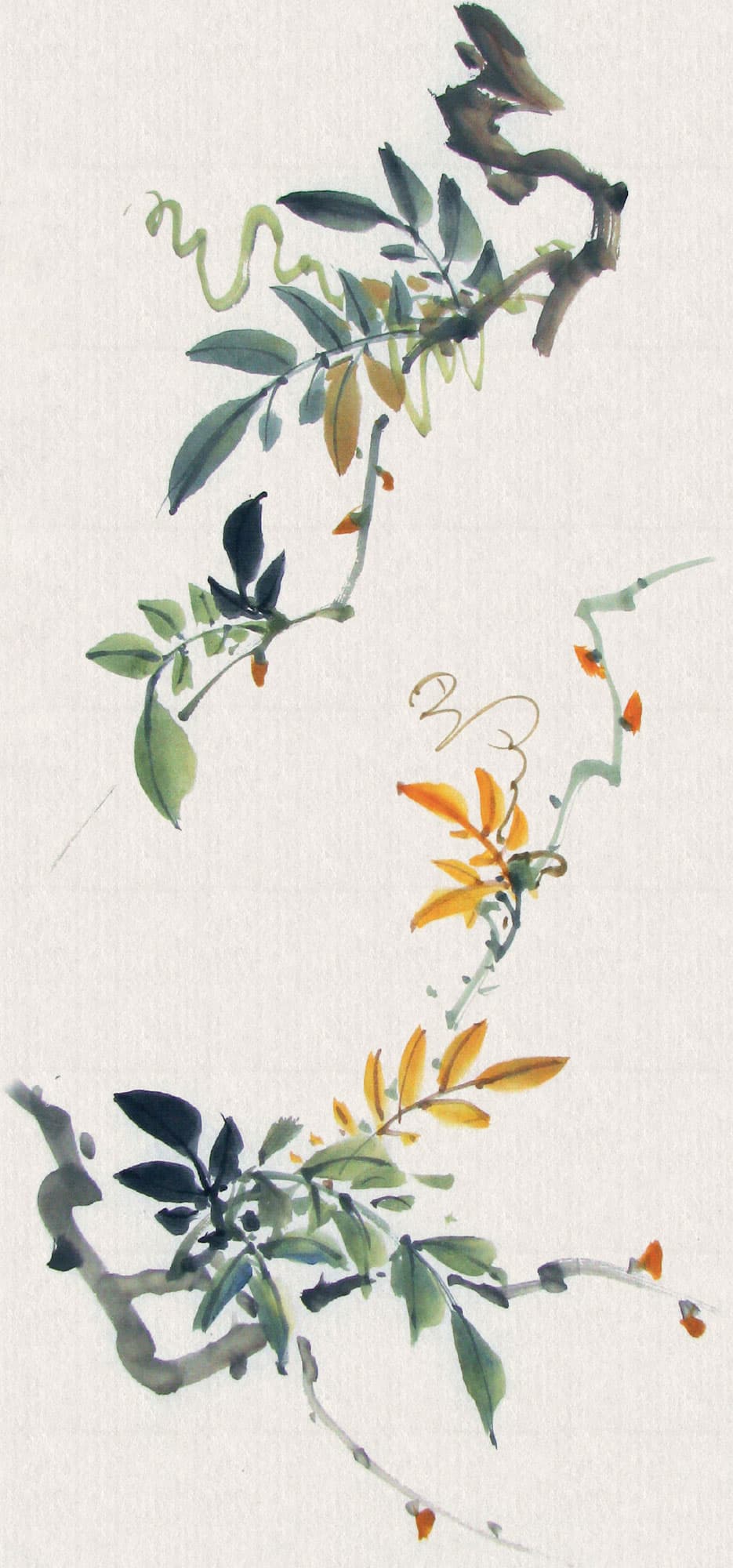
Wisteria Painting Progression

1 Start with the flower clusters, ensuring that one is lower than the other and at a different angle.
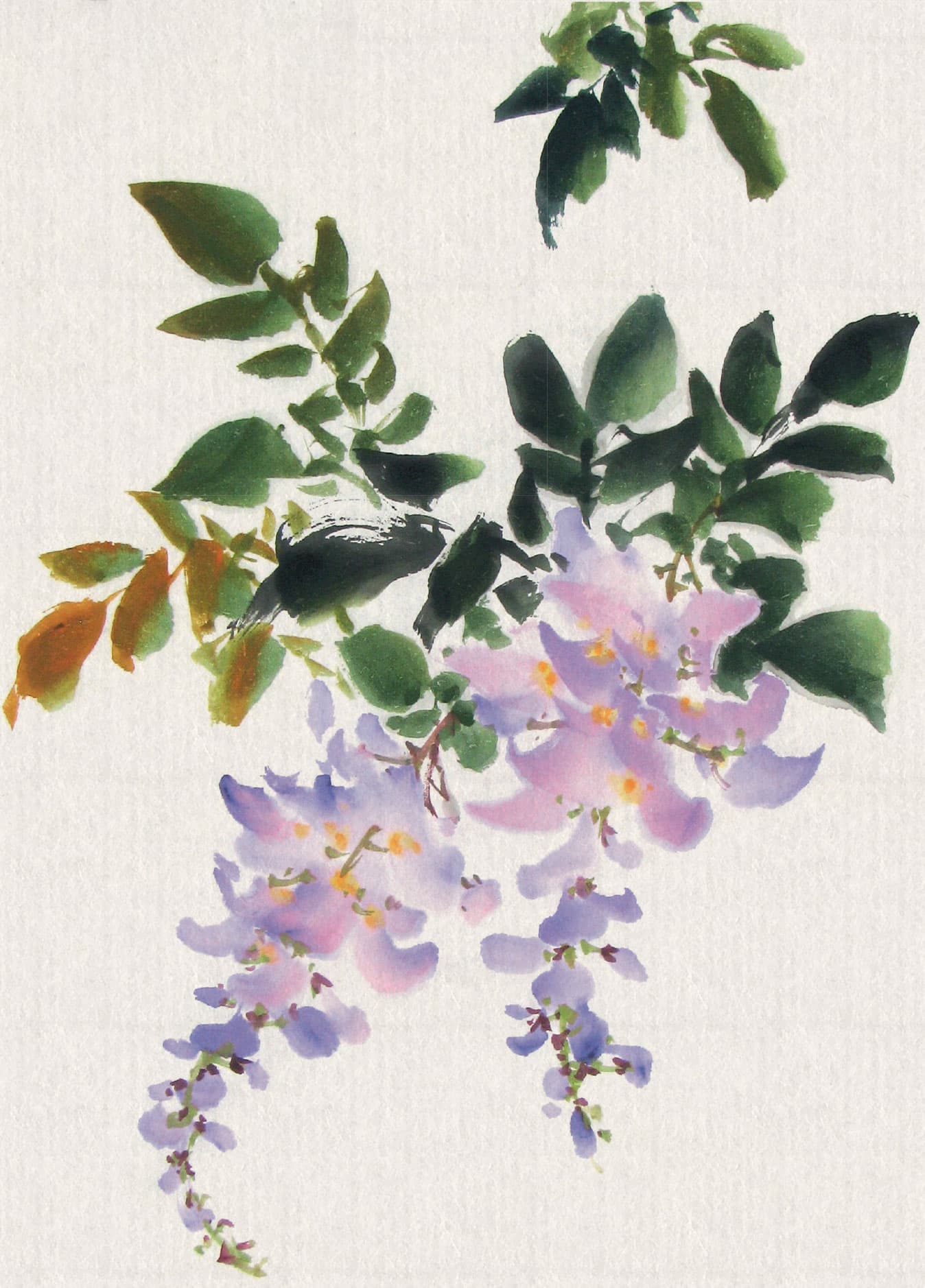
2 Add leaves in groups around the tops of the flowers. You can always add more later, but you can’t remove them, so keep the leaves sparse if you aren’t sure where your vines will go. Imagining possible routes for the vines will show you different possibilities.
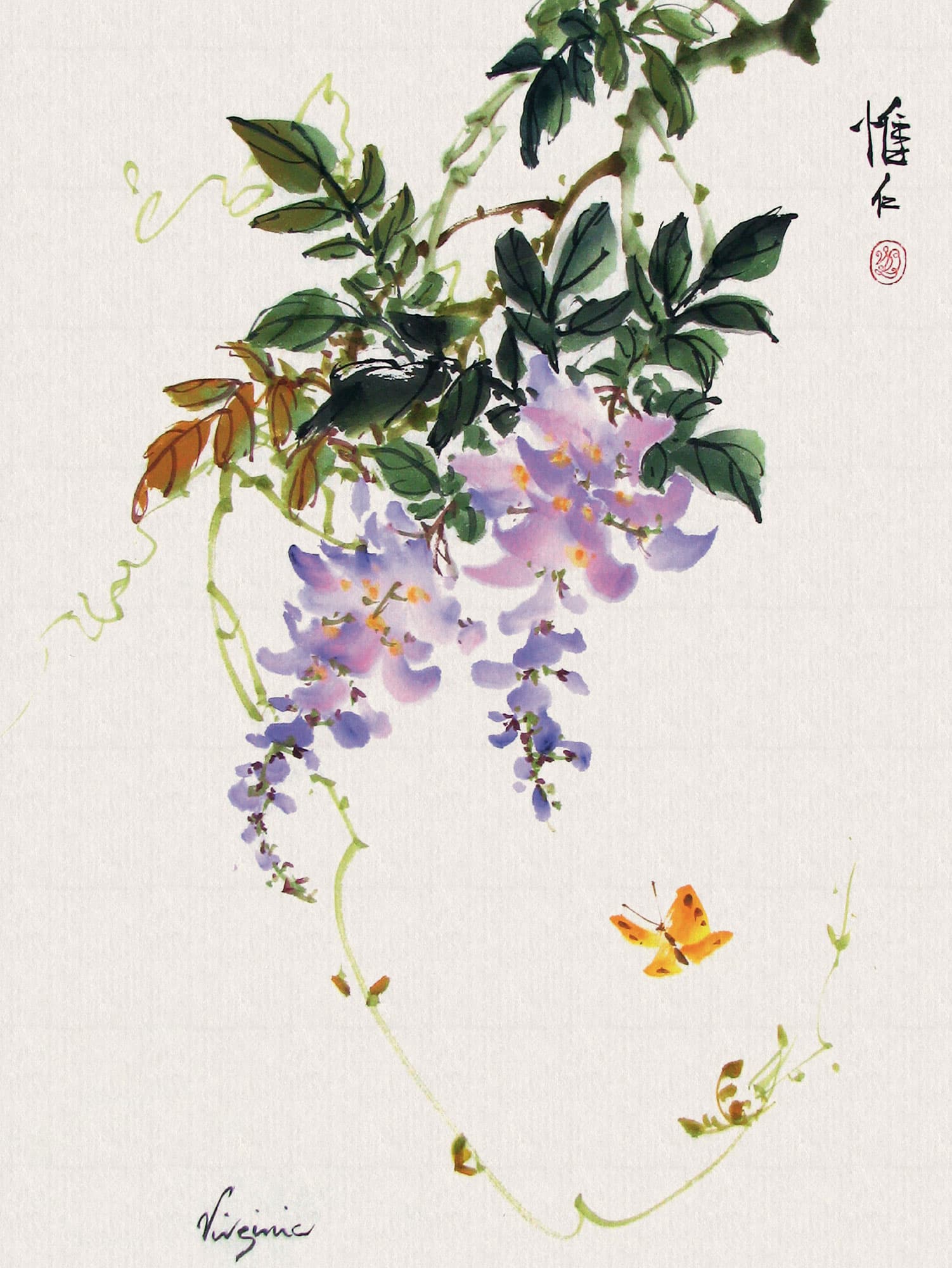
3 Add branches, vines, and trailing tendrils in graceful curving lines; then paint small, young leaves in light orange. Add a butterfly or some bees for extra movement.
